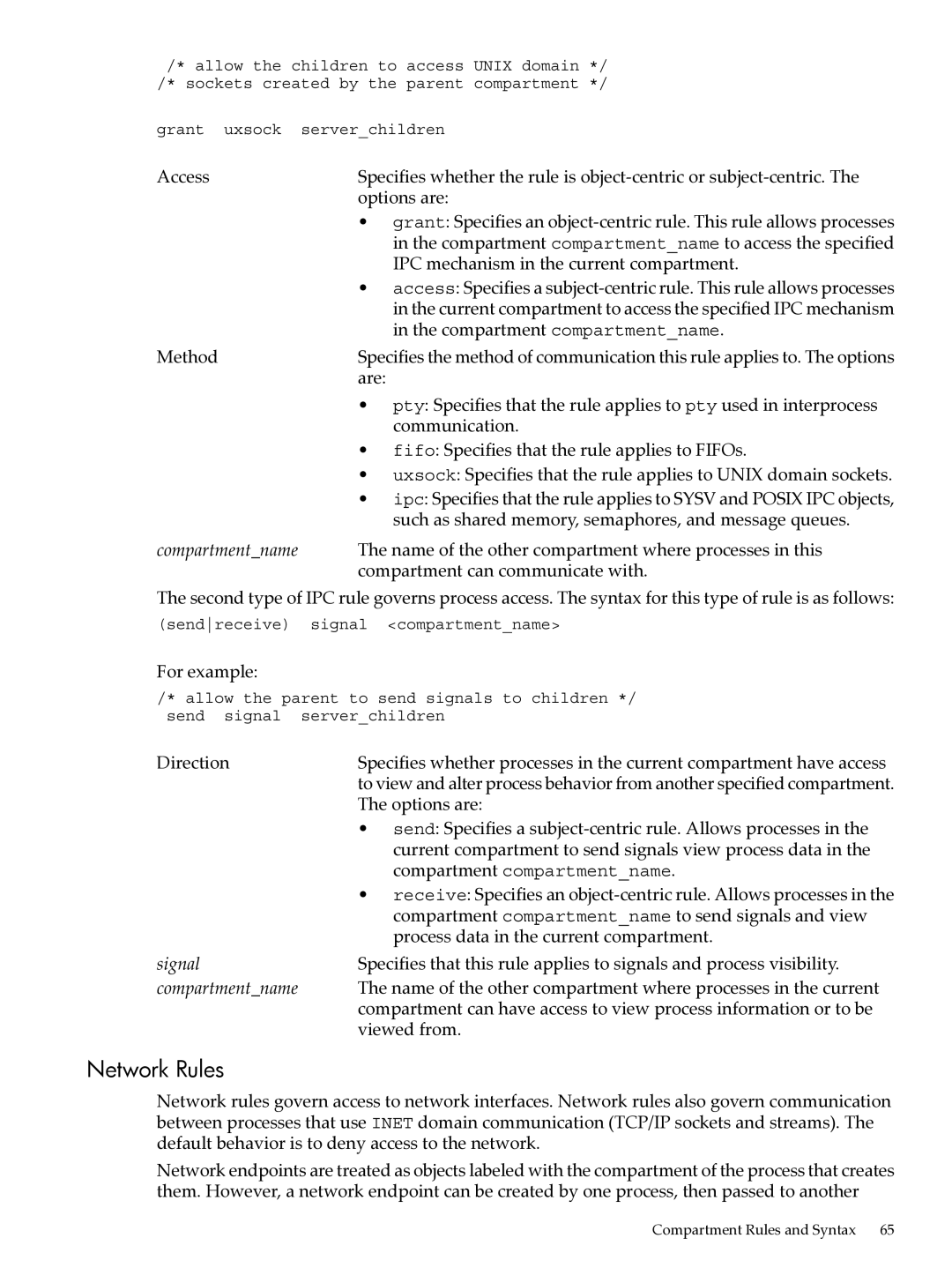/* allow the children to access UNIX domain */ /* sockets created by the parent compartment */
grant uxsock server_children
Access | Specifies whether the rule is |
| options are: |
| • grant: Specifies an |
| in the compartment compartment_name to access the specified |
| IPC mechanism in the current compartment. |
| • access: Specifies a |
| in the current compartment to access the specified IPC mechanism |
| in the compartment compartment_name. |
Method | Specifies the method of communication this rule applies to. The options |
| are: |
| • pty: Specifies that the rule applies to pty used in interprocess |
| communication. |
| • fifo: Specifies that the rule applies to FIFOs. |
| • uxsock: Specifies that the rule applies to UNIX domain sockets. |
| • ipc: Specifies that the rule applies to SYSV and POSIX IPC objects, |
| such as shared memory, semaphores, and message queues. |
compartment_name | The name of the other compartment where processes in this |
| compartment can communicate with. |
The second type of IPC rule governs process access. The syntax for this type of rule is as follows:
(sendreceive) signal <compartment_name>
For example:
/* allow the parent to send signals to children */ send signal server_children
Direction | Specifies whether processes in the current compartment have access |
| to view and alter process behavior from another specified compartment. |
| The options are: |
| • send: Specifies a |
| current compartment to send signals view process data in the |
| compartment compartment_name. |
| • receive: Specifies an |
| compartment compartment_name to send signals and view |
| process data in the current compartment. |
signal | Specifies that this rule applies to signals and process visibility. |
compartment_name | The name of the other compartment where processes in the current |
| compartment can have access to view process information or to be |
| viewed from. |
Network Rules
Network rules govern access to network interfaces. Network rules also govern communication between processes that use INET domain communication (TCP/IP sockets and streams). The default behavior is to deny access to the network.
Network endpoints are treated as objects labeled with the compartment of the process that creates them. However, a network endpoint can be created by one process, then passed to another
Compartment Rules and Syntax 65
